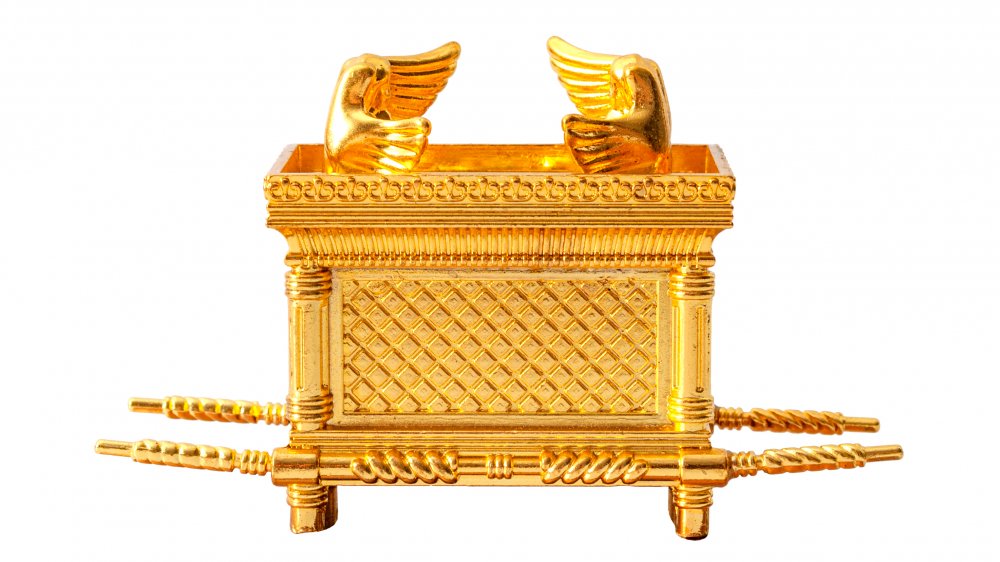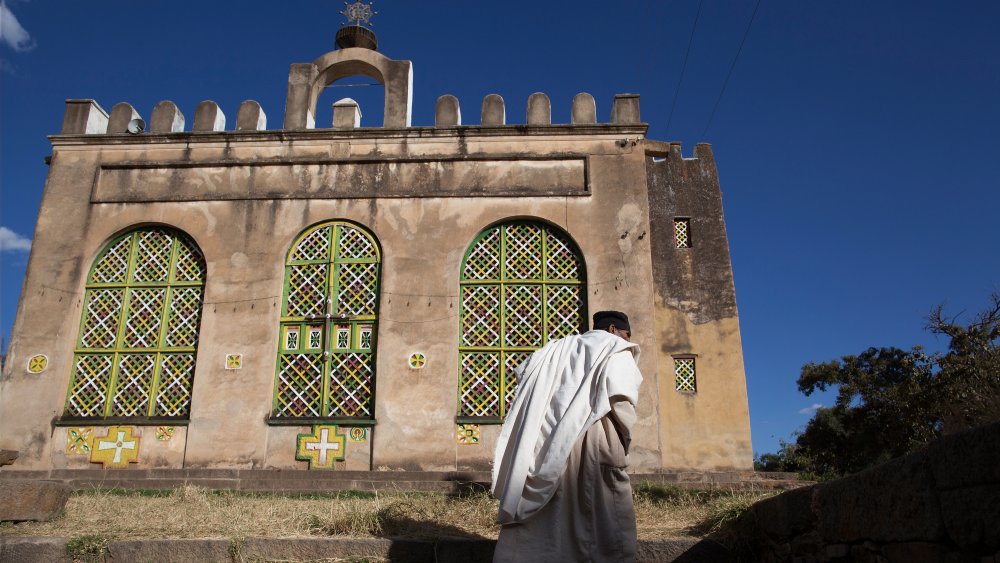What's Actually In The Ark Of The Covenant?
Okay, we all know what's inside the Ark of the Covenant, right? A glowy energy ball gives Nazis a bad case of fondue face, as depicted in this entirely historically accurate clip on YouTube. Good thing globe-trotting archaeologist Indiana Jones knew to close his eyes (and warn Marion to do the same), amirite?
Besides such kid-friendly spin-off tales, the Ark itself has been one of history's most enduring legends. Its current location has been the subject of countless inquiries, treatises, scholarly and unscholarly debates, and, of course, fictionalized representations. After all, the story is kind of cool: a holy relic from 1000 BCE, kind of like a box covered in gold, carried by the Israelites for 40 years after they were led by Moses to escape from slavery in Egypt. They wandered the desert until they found the promised land of Canaan, and along the way got involved in all sorts of shenanigans like worshiping golden calves, being fed by God with manna from the sky, and watching Moses go up Mt. Sinai to get the Ten Commandments.
This story, found in the second book of the Old Testament, Exodus, should be familiar to anyone who's gone to Yeshiva or Sunday School. Later, the Ark was apparently given by King David to his son Solomon, who installed it in the temple at Jerusalem. It's been connected to the Knights Templar, per History, and some believe it wound up in Ethiopia, per Smithsonian Magazine, in the town of Aksum.
But what exactly is really supposed to be inside the Ark, anyway?
The Guardian watches over the Ark and the Ten Commandments
Part of the issue in trying to decipher the truth about the Ark of the Covenant, even the truth of its existence, is all the secrecy and protectiveness surrounding the artifact. No one was allowed to tend to it besides the ancient Israelite's Levitical priest class. It's apparent, current resting spot in Ethiopia, in St. Mary of Zion Church, is tended by a single monk called (this is true) "The Guardian," who himself is not allowed to see the Ark, as described in Slate.
One thing can be agreed on: the Ark is supposed to contain the Ten Commandments, the essence of "the law" given to God's chosen people. You know, "thou shalt not kill," "thou shalt not steal," etc. That is, the Ark houses the physical stone tablets onto which the commandments were scrawled (the second copy, that is; Moses broke the first copy — it's a long story). In the classic 1956 movie Ten Commandments, God shoots some fire at the tablets and, in a feat of pretty sweet animation, burns his words onto them, as seen on YouTube (the "finger of God" in Exodus 30:18). It's safe to assume that Moses most likely used a chisel, though.
Per the English Standard Version, in Hebrews 9:4, the Bible does go into some detail about the Ark's contents, "in which was a golden urn holding the manna, and Aaron's staff that budded, and the tablets of the covenant."
Manna and the Staff of Aaron were put in, and then taken out
Manna was supposed to be divine food from God found on the ground that kept the Israelites alive in the desert. As read on Open Bible, it's described in a lot of different ways. In reality, as Moment Mag states, manna means "wet honey" in Farsi, and is likely honeydew, the "digestive byproduct of insects" that feed on the tamarisk tree found in the Sinai Peninsula. Such biomatter probably wouldn't have survived 3,000 years.
The staff of Aaron was an artifact wielded by the brother of Moses. As Rehabilitated outlines, the Book of Numbers (17:8) describes the leaders of the Twelve Tribes of Israel (the Levites, who took care of the Ark, were one such tribe) writing their names on staves and putting them in a pile on the ground. The following morning, Aaron's staff had sprouted not only flowers, but entire almonds. (Pretty fast, considering almonds take five to 12 years to be produced, per Blue Diamond.)
According to 1 Kings 8:9, however, there was nothing in the Ark except "the two tablets of stone that Moses put there at Horeb." This means someone might have taken the manna and staff out way before the Ark was apparently moved to Egypt for safekeeping in 586 BCE. Unless someone else put something in before it arrived in Ethiopia — and, of course, barring miracles — it seems like the Ark might, at present, contain only stone.


